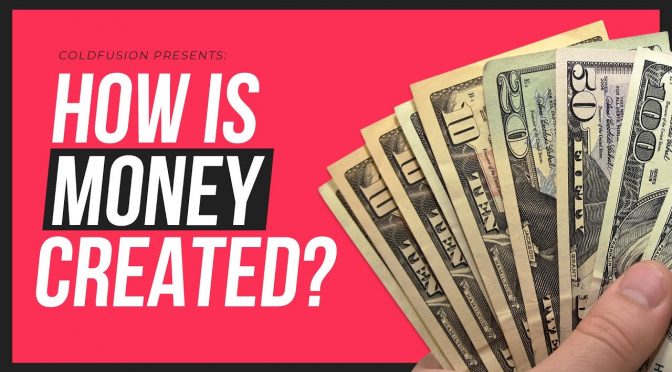This article is based on the video titled “How is Money Created? – Everything You Need to Know” by ColdFusion TV. The video provides an in-depth understanding of the complex process of money creation, its implications, and the potential consequences of the current financial system. The video also sheds light on the origins of wealth inequality and the role of different entities in the creation of money.
Contents
- Physical Money Creation by Governments
- Debt-Based Money Creation by Private Banks
- Central Bank Digital Money
- The Consequences of Money Creation
- The Future of Money Creation
- The video
- Conclusion
Physical Money Creation by Governments
The first form of money is created by governments, often outsourced to central banks or royal mints. This physical money, comprising paper notes and coins, constitutes a small fraction of the economy, typically between 3 to 8 percent. The profit from creating physical money, known as seigniorage, benefits the government and reduces the burden of taxation on the public. However, excessive printing of money can lead to inflation, devaluing the currency and potentially causing economic instability.
Debt-Based Money Creation by Private Banks
Private banks create the majority of money, approximately 97 percent, in the form of digital money. This process involves creating loans, which are essentially new money, and charging interest on them. When a bank issues a loan, it’s not using someone else’s savings or money it already had; it’s creating new money. This newly created money enters the wider economic system, stimulating growth. However, the accumulation of debt can lead to economic downturns, and in extreme cases, a systemic failure of the entire global monetary system.
Central Bank Digital Money
The third form of money is created through a process known as quantitative easing (QE), a strategy first implemented by the Japanese central bank in 1989 and later popularized by the Federal Reserve during the 2008 crisis. QE involves central banks creating money to issue loans directly to the banking sector, large corporations, and sometimes the public. This process can flood the economy with money during extreme events, such as a financial crisis. However, it can also lead to inflation and wealth inequality, as the first recipients of the newly printed money enjoy higher living standards at the expense of later recipients.
The Consequences of Money Creation
The current system of money creation has significant implications. It has led to a disconnect between the stock market and the real economy, contributing to wealth inequality. The rich, who own large amounts of stocks, become wealthier as central banks print more money and the stock market rises, while the poor get poorer due to a lack of growth in the real economy. This system also places a burden on future generations, who will have to pay back the debts incurred today through taxation or inflation.
The Future of Money Creation
The future of money creation is uncertain. Some predict that the current system will lead to stagflation, a situation of slow economic growth and high inflation. Others believe that digital stablecoins could solve many of the problems associated with the current system. Regardless of the future, it’s clear that the process of money creation has far-reaching implications for the economy and society.
The video
Conclusion
The process of money creation, involving governments, private banks, and central banks, is a complex system with significant implications for our economy and society. While it fuels economic growth, it also contributes to wealth inequality and places a debt burden on future generations. As we navigate the future, understanding this system is crucial for making informed decisions and advocating for change.

